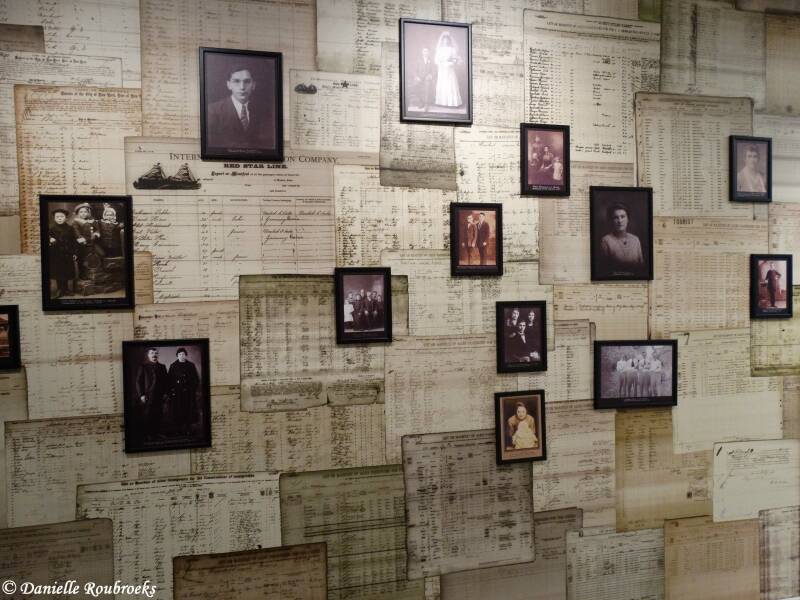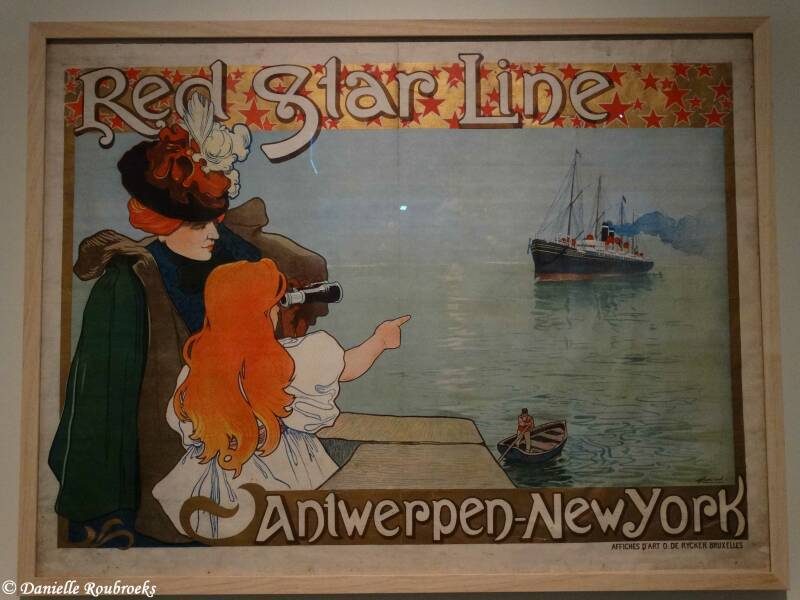Red Star Line Museum, Antwerp
Antwerp and the Red Star Line are inextricably linked. Millions of migrants arrived in and departed from Antwerp over the years, becoming a familiar sight on Antwerp’s streets. Two million passengers boarded Red Star Line steamers and crossed the ocean from Antwerp to North America. The museum portrays their journey of being transported by the shipping company and leaving the city and harbour. The stories of the passengers are the main element of the exhibition. The era in which the exodus took place, between 1873 and late 1934, is showed in a broad social context. Migration and human mobility have always existed: millions of people all over the world left (and continue to leave) the familiar behind, looking for a new future.
A layered story
In the Red Star Line Museum, you follow the path of the emigrants from leaving the country of origin, their long journey and temporary stay in Antwerp, to the ocean crossing and their arrival in America or Canada. The odyssey from the old to the new world is divided into stages. In the Antwerp story we present the city and its harbour, the old and new Eilandje neighbourhood and Antwerp as the last stop (on the way to America).
The Belgian component is about emigrants who fled poverty or persecution, or were looking for adventure, and boarded the Red Star Line steamers. They were full of hope for a new and better life overseas. A European context is unique to the history of the Red Star Line. Red Star Line passengers came from all over Europe. Belgian passengers were a minority. The Red Star Line Museum also tells an American story, in which the ancestors of contemporary Americans play a leading role. It’s about their origin and their destination. Finally, there is the universal story about dreams of a better life, about saying goodbye, discovering the unknown and the search for a new home.
Virtual museum visit
The first gallery functions as an orientation point for the public. Via a few strong images and installations visitors find answers to questions such as ‘Where am I?’, ‘What happened here?’ and ‘What is the importance of this place?’. The history of the buildings and the shipping company is explained in the old boiler room. The Red Star Line’s business charter and a few model ships are displayed. In the adjacent room, the history of humanity is presented as a history of migration via a timeline and twenty personal stories. Each of the twenty stories represent a period of massive migration, from the dispersion of modern man (60,000 to 40,000 BC) to the migration crises of today. The Red Star Line period is represented on the timeline by the story of Irving Berlin, who crossed the ocean to the United States as a child. A multimedia globe is a kaleidoscope of images that shows visitors the human face of migration and mobility.
In the footsteps of the emigrants
The historic main story starts in the next gallery. In this room visitors follow in the footsteps of the emigrants. The exhibition shows the different stages of the journey. Eight themes are presented over two floors: a travel agency in Warsaw, a train compartment, the city of Antwerp, the Red Star Line building, the deck of an ocean steamer, the interior of a ship, arrival at Ellis Island, and a new future in the US. The exhibition depicts how the average European emigrant would have experienced his or her journey at the beginning of the 20th century via attractive images, striking scenography and authentic objects. A strong focus is placed on the personal stories of Red Star Line passengers. We sketch an image of the expectations, hopes, disappointments and successes of the travellers based on interviews, letters, journals, photos, etc.
Six star witnesses are central to the story. Some of them are still alive, for others the well-documented story is told by a descendant. The stories include Albert Einstein who is one of those icons of the rich Red Star Line history. Other passengers might be less famous but they are not less interesting: Sonia Fuentes, Irène Bobelijn, Maurice and Ita Moel, the Hutlet family, and Adolf Verhalle. Elsewhere in the exhibit, the story of Irving Berlin, another iconic passenger on the Red Star Line, gets full attention.





